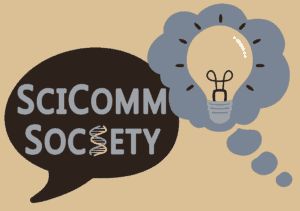My science writing articles
I am publishing regular articles on environmental, biological and health-related topics on the following platforms:
And published several science communication articles in
My science communication projects
BacterialWorld as a blogging platform to excite about the fascinating world of bacteria.
 Bacterialworld
Bacterialworld
- Microbes can help us achieve a sustainable planetMicrobes might just be the unseen heroes of sustainability! They impact everything from food production and healthcare to waste management and renewable energy. From producing eco-friendly materials and cleaning up pollution to helping fight climate change, microbes are essential in achieving the UN's Sustainable Development Goals. Read on to learn how they help us create […]
- How bacteria help feed the world by fixing nitrogenLike all organisms, plants need nitrogen to grow and produce crops. But since they cannot directly use nitrogen from the atmosphere, they rely on bacteria to fix the nitrogen for them. In exchange, plants provide them with sugars, energy and protection from their surroundings. Read on to learn more about the nitrogen-fixing superpower of bacteria […]
- How bacteria create the smells in our worldBacteria create various smells in our world, from pleasant aromas like freshly baked bread to the less appealing ones like body odour. As bacteria produce volatile organic compounds as part of their metabolism, these contribute to the scents we encounter in our environment, food and even on our bodies. Learn about smelly examples such as […]
Writer and publisher of “Coloured Bacteria from A to Z“
A colouring book for kids and adults to explore the bacterial world.
Available in German, English, French, Spanish, Portuguese, Hindi, Dutch.
Co-founder, blogger and science communication coach of SciComm Society, a platform to train scientists in effective science communication.
 SciComm Society
SciComm Society
- Understanding your target audience: The key to effective science communicationBridge the knowledge gap between your research expertise and your target audience's with the Pyramid of Learning for science communication. The post Understanding your target audience: The key to effective science communication appeared first on SciComm Society.
- Why stories make your research more impactfulAs experts in their fields, scientists often struggle to communicate their findings effectively to those outside their field. One simple and straightforward tool to help an audience understand science is storytelling. Since our brains are naturally wired for logical stories, it is the perfect approach for conveying complex scientific concepts. Read on to learn about […]
- Why embrace social media for science communicationWith recent shifts in the social media landscape, the scientific community turned upside down, with many even leaving the social media world altogether. This is why I felt it was important to look at why social media is still one of the best ways to share scientific knowledge with a global audience and make an […]
- How Emotions Make Science Stories Engaging and MemorableEmotions play a crucial role in how we understand and remember scientific information. By understanding how the brain processes information by leveraging emotions, science communicators can create content that not only educates but also inspires their audience to care about and share scientific knowledge. Learn here how to trigger the four key "epistemic emotions" - […]
Author of the LinkedIn Newsletter “Science, Travel & Communication“
Social media editor for FEMS Microbiology Letters.
Blog post commissioner for #FEMSmicroBlog
Science Communication Manager for the Scientific Panel on Responsible Plant Nutrition.
Editor of the LinkedIn Newsletter “Plant Nutrition for a Healthy Planet“.
Science Communication Manager for the International Plant Nutrition Council.
Peer-reviewed publications
Sarah Wettstadt, Marcos-Torres FJ, Otero-Asman JR, García-Puente A, Ortega Á, Llamas MA. 2024. Bacterial TonB-dependent transducers interact with the anti-σ factor in absence of the inducing signal protecting it from proteolysis. PLoS Biol.
Joaquín R. Otero-Asman, Ana Sánchez-Jiménez, Karlijn C. Bastiaansen, Sarah Wettstadt, Cristina Civantos, Alicia García-Puente, Wilbert Bitter, María A. Llamas. 2023. The Prc and CtpA proteases modulate cell-surface signaling activity and virulence in Pseudomonas aeruginosa. iScience.
Sarah Wettstadt, María Llamas. 2020. Role of Regulated Proteolysis in the Communication of Bacteria With the Environment. Front. Mol. Biosci.
Sarah Wettstadt, Erh-Min Lai, Alain Filloux. 2020. Solving the puzzle: connecting a heterologous Agrobacterium tumefaciens T6SS effector to a Pseudomonas aeruginosa spike complex. Front. Cell. Infect. Microbiol.
Sarah Wettstadt, Alain Filloux. 2020. Manipulating the type VI secretion system spike to shuttle passenger proteins. PLoS ONE.
Thomas E. Wood, Sophie A. Howard, Sarah Wettstadt, Alain Filloux. 2019. PAAR proteins act as the “sorting hat” of the type VI secretion system. Microbiology.
Sarah Wettstadt, Thomas E. Wood, Selina Fecht, Alain Filloux. 2019. Delivery of the Pseudomonas aeruginosa phospholipase effectors PldA and PldB in a VgrG- and H2-T6SS-dependent manner. Front Microbiol.
Sarah Wettstadt (joint first author), Joaquín R. Otero‐Asman (joint first author), Patricia Bernal, María A. Llamas. 2019. Diversity of extracytoplasmic function sigma (σECF) factor‐dependent signaling in Pseudomonas. Molec Microbiol MicroReview.
Panayiota Pissaridou, Luke P. Allsopp, Sarah Wettstadt, Despoina A.I. Mavridou and Alain Filloux. 2018. Pseudomonas aeruginosa tops the T6SS-VgrG1b spike with an evolved PAAR eliciting DNA damage in bacterial competitors. Proc Natl Acad Sci U S A.
Luke P. Allsopp, Thomas E. Wood, Sophie A. Howard, Federica Maggiorelli, Laura M. Nolan, Sarah Wettstadt, Alain Filloux. 2017. RsmA and AmrZ orchestrate the assembly of all three type VI secretion systems in Pseudomonas aeruginosa. Proc Natl Acad Sci U S A.






